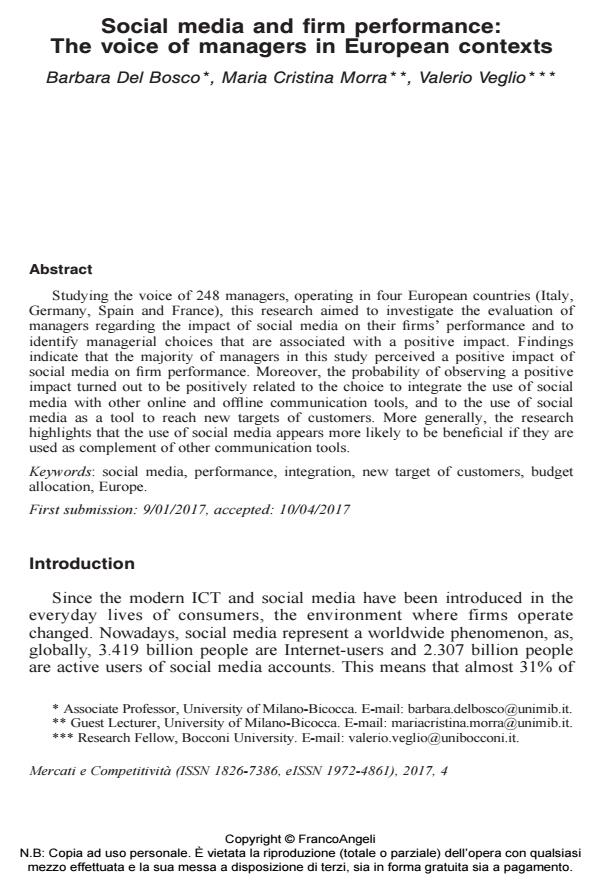Social media and firm performance: The voice of managers in European contexts
Titolo Rivista MERCATI & COMPETITIVITÀ
Autori/Curatori Barbara Del Bosco, Maria Cristina Morra, Valerio Veglio
Anno di pubblicazione 2017 Fascicolo 2017/4
Lingua Inglese Numero pagine 23 P. 53-75 Dimensione file 148 KB
DOI 10.3280/MC2017-004004
Il DOI è il codice a barre della proprietà intellettuale: per saperne di più
clicca qui
Qui sotto puoi vedere in anteprima la prima pagina di questo articolo.
Se questo articolo ti interessa, lo puoi acquistare (e scaricare in formato pdf) seguendo le facili indicazioni per acquistare il download credit. Acquista Download Credits per scaricare questo Articolo in formato PDF

FrancoAngeli è membro della Publishers International Linking Association, Inc (PILA)associazione indipendente e non profit per facilitare (attraverso i servizi tecnologici implementati da CrossRef.org) l’accesso degli studiosi ai contenuti digitali nelle pubblicazioni professionali e scientifiche
Studying the voice of 248 managers, operating in four European countries (Italy, Germany, Spain and France), this research aimed to investigate the evaluation of managers regarding the impact of social media on their firms’ performance and to identify managerial choices that are associated with a positive impact. Findings indicate that the majority of managers in this study perceived a positive impact of social media on firm performance. Moreover, the probability of observing a positive impact turned out to be positively related to the choice to integrate the use of social media with other online and offline communication tools, and to the use of social media as a tool to reach new targets of customers. More generally, the research highlights that the use of social media appears more likely to be beneficial if they are used as complement of other communication tools.
Parole chiave:Social media, performance, integration, new target of customers, budget allocation, Europe.
- Qualitative Comparative Analysis (QCA): A useful methodological tool for research in the social sciences. An example from the online word-of-mouth context Ilenia Confente, Ivan Russo, in MERCATI & COMPETITIVITÀ 4/2018 pp.87
DOI: 10.3280/MC2018-004006 - Is Facebook an effective tool to access foreign markets? Evidence from international export performance of fashion firms Alice Mazzucchelli, Roberto Chierici, Angelo Di Gregorio, Claudio Chiacchierini, in Journal of Management and Governance /2021 pp.1107
DOI: 10.1007/s10997-021-09572-y
Barbara Del Bosco, Maria Cristina Morra, Valerio Veglio, Social media and firm performance: The voice of managers in European contexts in "MERCATI & COMPETITIVITÀ" 4/2017, pp 53-75, DOI: 10.3280/MC2017-004004